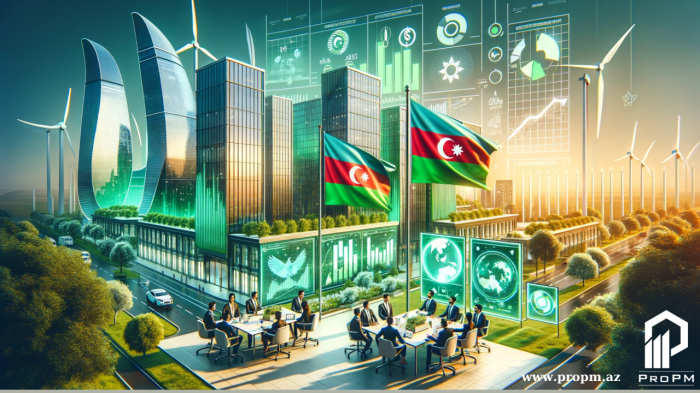‘Employing hydrogen in various fields is considered the cornerstone of switching to green energy’, says Fuad Hasanov, Head of Hydrogen and Green Technologies Department at Azerbaijan Renewable Energy Agency under the Ministry of Energy of the Republic of Azerbaijan in his interview to AzVision.az. The expert says hydrogen can be classified as green, blue, etc. depending on resources and technologies used in production.
Producing green and blue hydrogen leaves the minimal carbon print, thus minimizing the impact on the environment. Hydrogen is crucial for various fields of economy, such as industry and transportation.
In agriculture, hydrogen is used as raw material in the productions of fertilizers, carbamide, methanol and ammonia, while in energy sector, it has the potential to be utilized as energy storage. Electricity generated from solar and wind power may be stored as hydrogen and reconverted into energy when needed.
Using pure hydrogen plays a special part in reducing carbon emissions and helping countries achieve carbon neutrality. Many countries have thus added hydrogen to their agenda to ensure energy security through greener and more sustainable sources.
- What is Azerbaijan doing in the field? Do we have a hydrogen agenda?
‘We have already adopted several hydrogen projects within our strategic programs. It is on the agenda, with research already ongoing.
Azerbaijan announced the ‘National Strategic Review for Hydrogen’ within COP29. One of the three initiatives put forward in energy within COP29 was on hydrogen, which allows us to take more serious steps in this direction. These projects will be our keystones in the area moving forward.
Analysis conducted long before the Strategic Review has proved that Azerbaijan has great renewable energy potential both on land and offshore. Our wealth in natural gas reserves will also contribute to developing low-carbon hydrogen economy in our country. The ‘green energy corridors’ running along the bottom of the Black Sea, passing through the Caspian Sea and Azerbaijan, already include a hydrogen component. Central Asian countries, including Uzbekistan and Kazakhstan, are interested in building ‘green energy corridors’ with Azerbaijan. One of these components is exporting green hydrogen and other green gases, and they will be assessing the export potential for them.’
- Are we planning to generate hydrogen through solar and wind energy only? What is the status of other types of hydrogen?
‘Green hydrogen production requires using clean energy, such as hydro, wind and solar power. This process entails water electrolysis. Green hydrogen is considered the cleanest type there is.
Blue hydrogen, on the other hand, is produced through converting natural gas into hydrogen through various technological processes. Meanwhile, the carbon generated during the process is not released into the atmosphere but captured. It could be stored in offshore gas wells in the future.’
- Can hydrogen be transported through existing pipelines?
‘It can and there have already been practical studies to back it up. A mixture of natural gas and hydrogen (20% of the mixture) can be transported through existing pipelines after certain technological enhancements. It must still be based on research and more solid figures during the following stages to comply with safety regulations. The pipeline must be assessed in advance as both physical and chemical properties of hydrogen differ from those of natural gas. We have already initiated assessments of the Southern Gas Corridor and preliminary results show that it can transport hydrogen if it makes up 10% of the mixture with natural gas.’
- How good are Azerbaijan’s chances to access European hydrogen markets?
‘We have carbamide and methanol plants operating in the country, which use hydrogen as raw material. Our main goal in the near to mid-term is to switch from traditional to pure hydrogen. The following steps would include defining our export directions and routes and evaluating our potential according to the existing demand in the market. But we must first focus on decarbonizing the local market before considering the EU or other destinations.
The International Energy Agency reports that the global demand for hydrogen in 2023 was estimated at 100 million tons. The number is expected to increase by 60% in 2030. The REPowerEU plan, proposed by the European Commission, envisages producing 10 million tons of hydrogen and exporting another 10 million tons from abroad. This also plays an important role in shaping the export directions for us.
Sahil Isgandarov
More about:















































